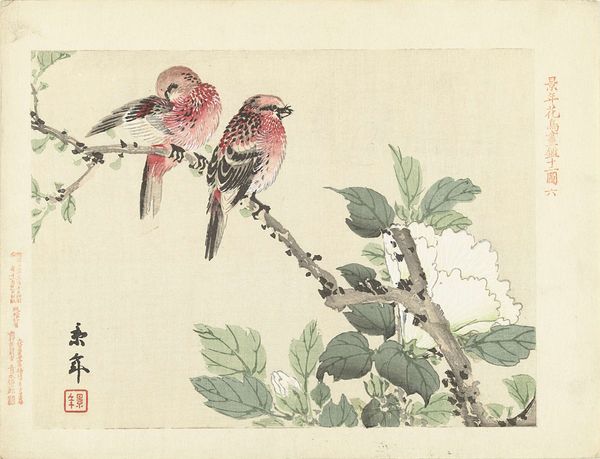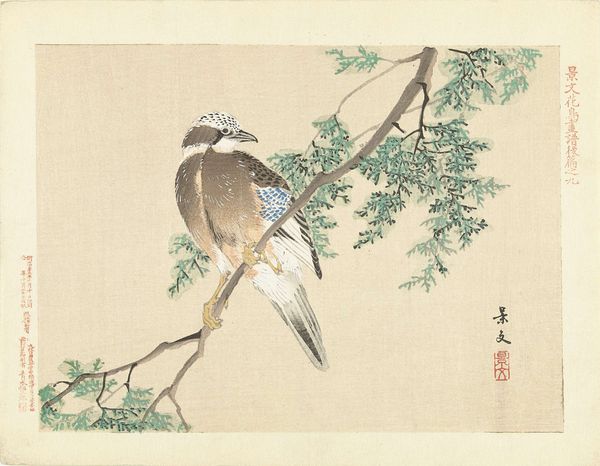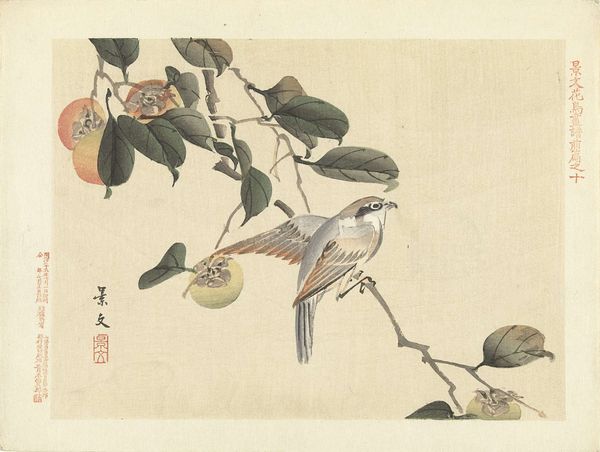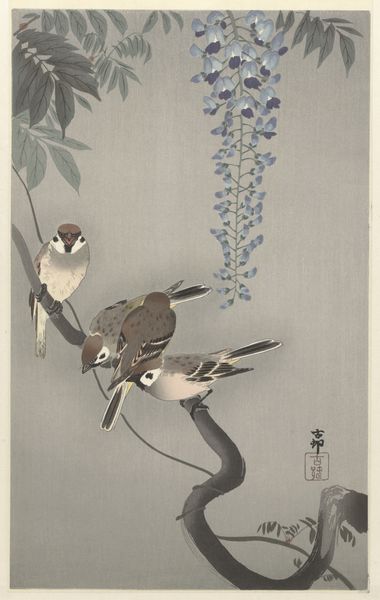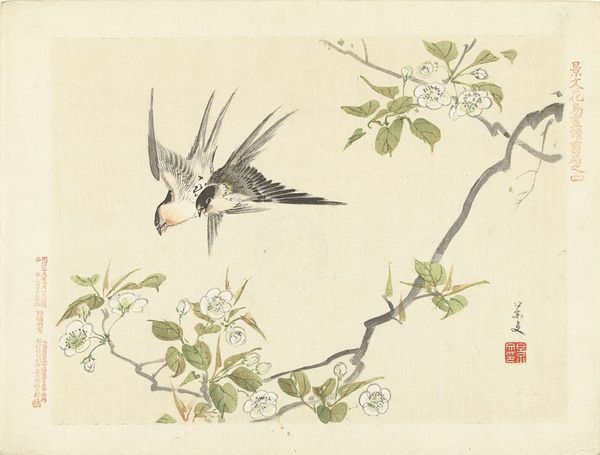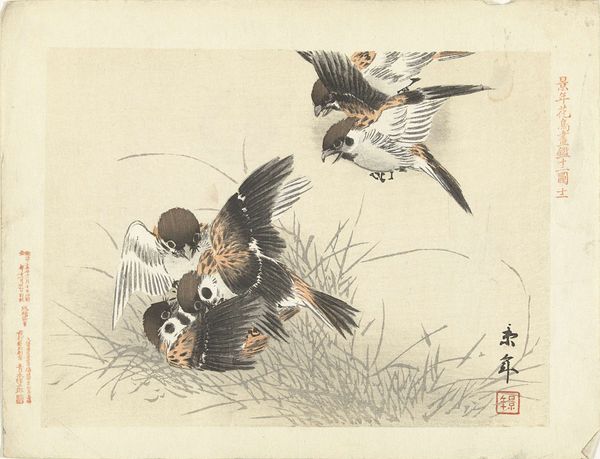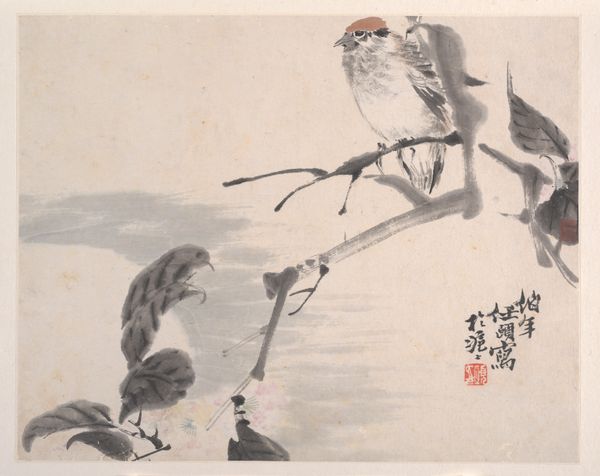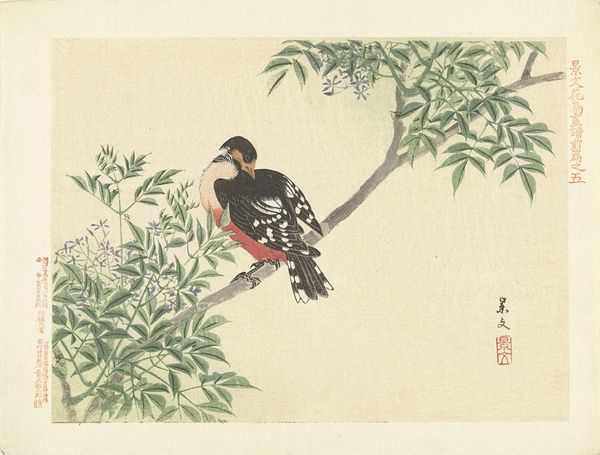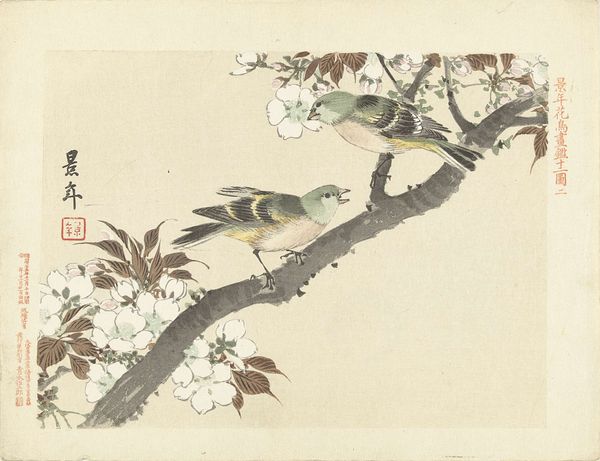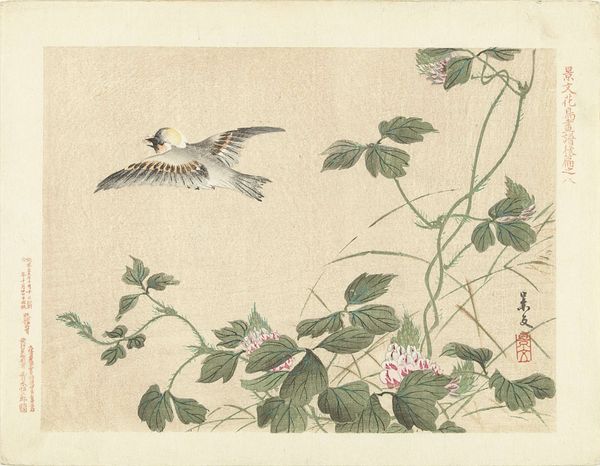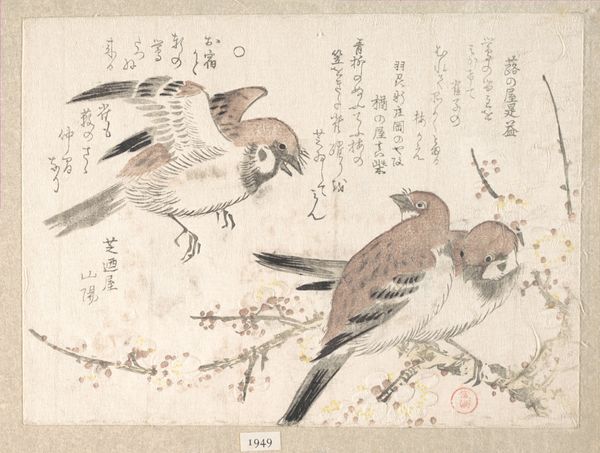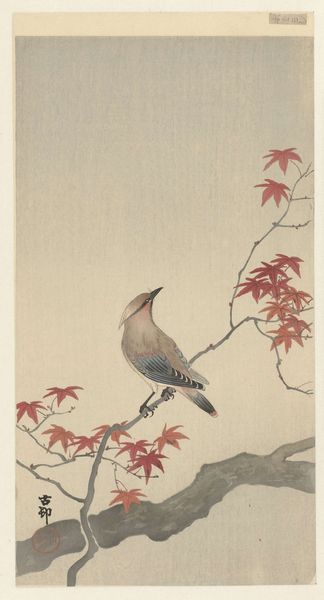
Dimensions: height 210 mm, width 273 mm
Copyright: Rijks Museum: Open Domain
Curator: A peaceful scene; the watercolor’s muted tones create such a calm atmosphere. Editor: It's fascinating how the image balances realism with such clear artistic license. The materiality seems humble, perhaps even deliberately understated. Curator: Exactly. We're looking at Imao Keinen’s "Koppel fazanten op rots," made in 1892. Keinen’s known for his delicate and intimate depictions of nature. He masterfully captured not just the visual appearance but also the spirit of these birds. Editor: And they're pheasants perched on a rock, hence the title. The texture of that rock, though – is that from the paper itself or from the layering of washes? The visible brushstrokes emphasize process. The whole piece makes me consider the economy of artistic labour during the late 19th century. These materials were chosen, bought, transported. Curator: Absolutely. Consider how pheasants, across cultures, represent beauty, rebirth, and prosperity. Their elaborate plumage is loaded with symbolism. The juxtaposition of the two birds creates a yin-yang tension that’s central to East Asian aesthetics. Editor: I agree, but notice how carefully the scene is constructed to seem casual, like a momentary glimpse. However, everything is precise—down to the plum blossoms in the corner! This resonates with a larger social interest of the time of Japanese aesthetic and craft. Curator: The way Keinen rendered the soft feathers carries associations with familial connection, and gentle affection. A beautiful cultural representation through ukiyo-e tradition that ties it with the world outside of the canvas. Editor: Precisely! The blend of observation, social milieu, and deliberate craft is very engaging. Curator: A small piece of artwork with a depth that resonates through cultures and ages. Editor: An exercise in refined technique – with economic undertones. Fascinating indeed.
Comments
No comments
Be the first to comment and join the conversation on the ultimate creative platform.
